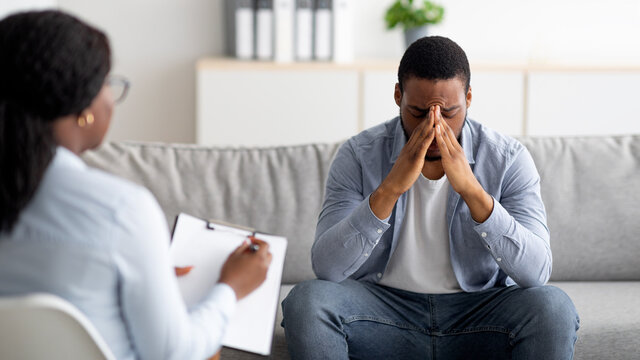
Introduction: When Yesterday Shapes Today
Love should feel safe, warm, and supportive. But for many people, relationships bring up fear, insecurity, or even a sense of danger. Why? Because the past has a way of bleeding into the present.
If you’ve ever wondered why you feel anxious when your partner doesn’t text back quickly, or why you panic when a small disagreement arises, the answer might lie in unhealed trauma. Past wounds don’t always stay buried. They show up—sometimes subtly, sometimes dramatically—in how we connect, argue, and even how we love.
The truth is, trauma is more than just a painful memory. It changes the way your mind, body, and emotions function. If left unaddressed, it can sabotage even the most loving relationship. But here’s the hopeful part: once you recognize how trauma shows up, you can heal, grow, and build relationships that feel safe again.
This article will unpack how past trauma manifests in relationships, why it happens, and practical ways to break free. Along the way, you’ll find real-life scenarios, easy-to-follow tips, and even a comparison table to help you understand the difference between trauma-driven reactions and healthy patterns.
Understanding Trauma and Its Lasting Impact
Trauma isn’t always about catastrophic events. It can stem from:
- Childhood neglect or abandonment
- Emotional or verbal abuse
- Betrayal or infidelity
- Witnessing violence
- Bullying or repeated rejection
When these experiences go unresolved, the nervous system doesn’t forget. Trauma can create “triggers”—small reminders that bring the body back to a state of danger, even when the present moment is safe.
The science behind it:
- The amygdala (alarm center) becomes hyperactive, making you react strongly to perceived threats.
- The hippocampus (memory center) sometimes misfiles traumatic experiences, so the body relives them as if they’re happening now.
- The prefrontal cortex (logic center) gets hijacked, making it hard to rationalize during triggers.
The American Psychological Association notes that trauma changes how people process emotions and stress long after the event is over. This explains why someone may respond disproportionately to small disagreements—it’s not about the present; it’s about the past echoing loudly.
Signs Trauma Is Affecting Your Relationships
How do you know if unresolved trauma is at play? Patterns often speak louder than isolated moments.
Emotional patterns:
- Constant fear of being abandoned.
- Struggling to trust—even when your partner is reliable.
- Intense reactions to mild criticism.
Behavioral patterns:
- Over-apologizing or people-pleasing to avoid rejection.
- Checking your partner’s messages due to jealousy.
- Avoiding intimacy or vulnerability.
Physical patterns:
- Tightness in the chest during conflict.
- Difficulty sleeping after arguments.
- Feeling drained after emotional conversations.
When the same cycles repeat across different partners, it’s often a sign that past trauma is driving the behavior.
Table: Past Trauma vs. Present Relationship Patterns
| Type of Past Trauma | How It Shows Up in Relationships Today | Example Scenario |
|---|---|---|
| Childhood abandonment | Clinginess, fear of being left, constant reassurance seeking | Panics when texts aren’t answered quickly |
| Emotional neglect | Difficulty expressing needs, shutting down during conflict | Goes silent during arguments |
| Betrayal or infidelity | Hypervigilance, jealousy, phone checking | Feels anxious when partner talks to others |
| Verbal abuse | Overreacting to criticism, defensiveness | Feels attacked by constructive feedback |
| Domestic violence | Fear of confrontation, avoiding disagreements | Avoids difficult conversations at all costs |
| Bullying or rejection | Low self-esteem, need for validation | Needs frequent compliments to feel secure |
This table helps visualize how yesterday’s wounds creep into today’s intimacy.
Why Trauma Shows Up in Love
Romantic relationships are fertile ground for trauma triggers because they demand trust, vulnerability, and intimacy—the very areas trauma damages.
Four reasons trauma resurfaces in relationships:
- Attachment wounds: Early trauma disrupts how we form bonds, making us anxious, avoidant, or fearful in love.
- Emotional intimacy: Getting close to someone reopens old fears of being hurt.
- Conflict reminders: Arguments mimic unsafe environments from the past.
- Unmet needs: We unconsciously seek from partners what we never got as children.
Research published in the Journal of Traumatic Stress shows that unresolved trauma often influences adult attachment styles, making relationships both deeply desired and deeply feared.
The Negative Cycle Trauma Creates
Here’s what often happens when trauma goes unhealed:
- Trigger: Your partner forgets to call.
- Reaction: You panic, convinced they don’t care.
- Conflict: You accuse or withdraw.
- Misunderstanding: Your partner feels attacked or confused.
- Confirmation: The argument “proves” your fear of abandonment.
This loop reinforces old wounds, making each relationship feel harder than the last.
Breaking the Cycle: Steps Toward Healing
Healing is possible, but it requires intentional steps.
1. Self-awareness
Notice patterns. Do your reactions feel bigger than the situation? That’s a clue a trigger is at play.
2. Pause and regulate
Take deep breaths, go for a walk, or journal before responding. This gives your brain time to reengage logic.
3. Communicate openly
Use “I feel” statements: “I feel anxious when you don’t text back because of my past experiences.”
4. Professional support
Therapies like CBT, somatic therapy, or EMDR help reframe traumatic memories.
5. Self-compassion
Remind yourself: “This reaction comes from survival, not weakness.”
Healing is messy, but every step forward breaks the cycle.
How Partners Can Support Healing
If you love someone with trauma, your role isn’t to “fix” them but to support them.
What helps:
- Listen actively, without rushing to offer solutions.
- Offer consistent reassurance without judgment.
- Respect boundaries, even if you don’t understand them.
- Celebrate progress, no matter how small.
- Encourage therapy if it feels right.
What doesn’t help:
- Dismissing their triggers as “silly.”
- Using their trauma against them in fights.
- Expecting them to “just get over it.”
Supportive love creates a safe environment where healing becomes possible.
The Positive Side of Facing Trauma Together
It’s easy to see trauma as only negative, but couples who work through it can grow stronger than ever.
Benefits of addressing trauma in relationships:
- Deeper empathy: You learn to see the world through each other’s eyes.
- Better communication: Honest discussions about triggers build understanding.
- Resilience: Overcoming challenges together strengthens the bond.
- Stronger boundaries: Healing teaches both partners to respect needs and limits.
The National Institute of Mental Health emphasizes that supportive environments are key to resilience. A relationship can become a place of repair, not just pain.
When to Seek Professional Help
Sometimes the weight of trauma is too heavy to carry alone—or even with a partner.
Seek professional help if:
- Every conflict escalates into the same cycle.
- You shut down emotionally and avoid intimacy.
- Anxiety or depression overshadows the relationship.
- You notice trauma responses spilling into work or friendships.
Therapists trained in trauma can provide the tools needed to break old patterns.
Mini-Scenarios: What Trauma Looks Like in Real Life
- Case 1: Fear of abandonment
Alex’s partner forgets to call after work. Instead of brushing it off, Alex spirals into panic, convinced they’re losing interest. This reaction stems from childhood abandonment. - Case 2: Emotional neglect
Maria grew up in a home where emotions were ignored. Now, when her partner asks, “How are you feeling?” she freezes. Sharing emotions feels dangerous. - Case 3: Betrayal trauma
Sam was cheated on in a past relationship. In his new one, he constantly checks his partner’s phone. It isn’t about current trust—it’s the shadow of past betrayal.
These examples show how easily yesterday’s pain slips into today’s love.
Affirmations for Healing in Relationships
Words are powerful. The things you repeat to yourself—whether positive or negative—shape how you think, feel, and act. When you’ve been through trauma, betrayal, or heartbreak, the inner voice often becomes harsh. It whispers lies like “I’m not lovable,” “I’ll always be abandoned,” or “Conflict means I’ll get hurt.”
Affirmations are intentional statements that replace those destructive inner scripts with healthier ones. They don’t erase trauma overnight, but they help rewire the brain, slowly shifting the way you respond to love, intimacy, and conflict. Think of them as emotional training exercises: the more you practice, the stronger your belief in them becomes.
Why Affirmations Matter in Healing
Affirmations work because they target the subconscious mind. When repeated regularly, they:
- Challenge old beliefs formed by trauma or neglect.
- Calm anxiety during moments of conflict or triggers.
- Promote self-compassion, replacing self-criticism with kindness.
- Reinforce trust in your ability to give and receive love.
- Encourage emotional safety, reminding you that not every disagreement means danger.
Neuroscience supports this practice. Studies on positive self-talk show that affirmations activate areas of the brain linked to self-worth and future planning, making people more resilient during stressful events.
How to Use Affirmations Effectively
Affirmations only work if you practice them consistently and with intention. Here’s how to integrate them into your healing journey:
- Choose affirmations that feel believable. If an affirmation feels fake, your mind will reject it. Start with phrases that feel true enough.
- Repeat them daily. Say them in the morning, before bed, or during stressful moments.
- Speak them out loud. Hearing your own voice reinforces belief more than silent repetition.
- Write them down. Stick them on your mirror, journal, or phone reminders.
- Pair with action. Affirmations are most effective when combined with conscious efforts like therapy, boundary setting, or healthy communication.
Examples of Affirmations for Relationship Healing
🌱 Affirmations for Self-Worth
- “I am worthy of love and respect.”
- “My value is not defined by anyone else’s actions.”
- “I bring kindness, strength, and light into relationships.”
For Communication
- “It is safe for me to express my needs.”
- “I can disagree without losing love.”
- “Honesty strengthens my connections.”
Affirmations for Boundaries
- “Saying no protects my peace, and that is okay.”
- “Healthy boundaries create stronger relationships.”
- “Respect for myself teaches others how to respect me.”
For Trust and Intimacy
- “I can open my heart without losing myself.”
- “Not everyone will betray me—some people are safe.”
- “Love grows stronger when I allow myself to be vulnerable.”
Affirmations for Overcoming Fear
- “The past does not control my present.”
- “I can handle challenges calmly and with strength.”
- “I release the fear of abandonment and welcome security.”
When to Use Relationship Affirmations
- Morning routine: Start your day grounded in self-worth.
- Before difficult conversations: Use affirmations to calm nerves.
- After arguments: Remind yourself the relationship can recover.
- During anxiety triggers: Replace “I’ll be abandoned” with “I am safe in this moment.”
- Before dates: Boost confidence with self-affirming statements.
Affirmations in Action: A Scenario
Imagine Sarah, who grew up in a home where emotions were dismissed. In her relationship, she struggles to speak up, fearing conflict will lead to rejection. She begins practicing affirmations like:
- “It is safe for me to express my feelings.”
- “Conflict can lead to understanding, not abandonment.”
At first, the words feel awkward. But after weeks of repeating them before tough conversations, Sarah notices she no longer shuts down. Her partner responds with understanding, reinforcing the truth of her affirmations. Over time, her inner script shifts from silence to strength.
Affirmations vs. Old Trauma Scripts
| Old Trauma Script | Healing Affirmation Replacement |
|---|---|
| “I’ll always be abandoned.” | “I am safe and secure in healthy love.” |
| “I don’t deserve happiness.” | “I am worthy of joy and connection.” |
| “If I speak up, I’ll be rejected.” | “My voice matters, and my needs are valid.” |
| “Conflict means danger.” | “Disagreements can build understanding.” |
| “I’m too broken to love.” | “I am healing, growing, and lovable.” |
This shift doesn’t happen overnight, but each repetition weakens the grip of trauma and strengthens healthier beliefs.
Healing relationships after trauma is not just about what happens externally—it’s about reshaping the inner dialogue. Affirmations help you rebuild trust with yourself, which is the foundation for trusting others.
Every time you affirm your worth, your safety, or your right to healthy love, you take back power from the past. Over time, affirmations move from being words you say to truths you live.
✨ Key takeaway: Affirmations are not magic spells—they’re tools. With practice, they reprogram your mind to align with the love, respect, and safety you deserve.
Conclusion: Your Past Doesn’t Have to Define Your Present
Trauma may shape how you see love, but it doesn’t have to dictate your relationships forever. By understanding triggers, breaking cycles, and seeking healing, you can create connections rooted in trust, safety, and authenticity.
The journey is not about erasing scars—it’s about transforming them into wisdom. And when you face trauma with courage, relationships become not just a place of pain, but a space of healing, growth, and deeper love.









